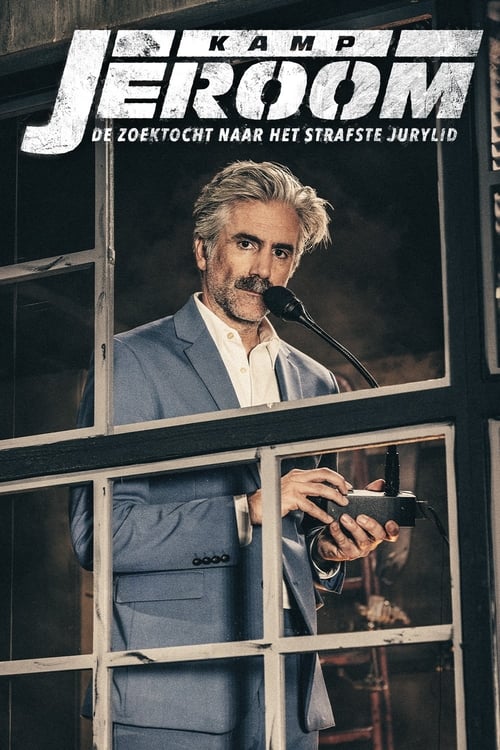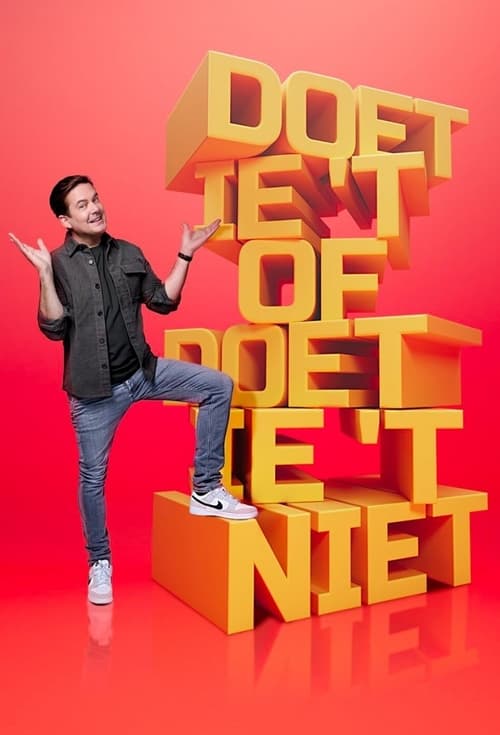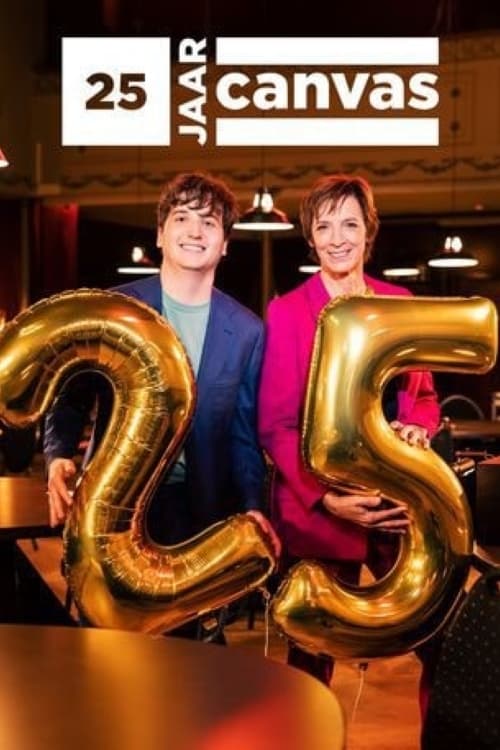
Ask Your Own Question
What is the plot?
In the opening scene of "Ik Ga Stuk!", we are introduced to the main character, a young woman named Lotte, who is struggling with the pressures of her life. She is seen in her small, cluttered apartment, surrounded by reminders of her ambitions and failures. Lotte is an aspiring artist, but her self-doubt and anxiety are palpable as she stares at a blank canvas. The scene sets the tone for her internal conflict, showcasing her desire to create but also her fear of judgment.
As the story progresses, Lotte receives an invitation to a prestigious art exhibition. This news ignites a flicker of hope within her, but it is quickly overshadowed by her insecurities. She confides in her best friend, Sara, who encourages her to submit her work. However, Lotte's hesitation leads to a heated argument between them, revealing the strain in their friendship. Lotte feels misunderstood and pressured, while Sara is frustrated by Lotte's lack of confidence.
Determined to prove herself, Lotte begins to work on a new piece for the exhibition. The creative process is depicted in a series of montages, showcasing her struggles with inspiration and her emotional turmoil. As she paints, flashbacks reveal her past experiences with rejection and criticism, deepening the audience's understanding of her character. The vibrant colors of her artwork contrast with her somber mood, symbolizing her internal battle.
In a pivotal moment, Lotte decides to take a break and attends a local art fair. There, she meets a charismatic artist named Max, who becomes a source of inspiration and encouragement for her. Their chemistry is palpable, and Lotte feels a sense of liberation in his presence. Max shares his own struggles with self-doubt, which resonates with Lotte and helps her to open up about her fears. This connection motivates her to push through her creative block.
As the deadline for the exhibition approaches, Lotte becomes increasingly anxious. She isolates herself from Sara and her other friends, focusing solely on her artwork. This decision leads to a series of emotional breakdowns, where Lotte questions her worth as an artist. The tension builds as she grapples with the fear of failure, and her mental state deteriorates. The audience witnesses her moments of despair, marked by tears and frustration as she battles against her inner demons.
In a climactic scene, Lotte finally completes her piece just hours before the exhibition. The artwork is a raw and honest reflection of her struggles, filled with bold strokes and vivid colors that convey her emotional journey. However, as she prepares to submit it, she receives a text from Sara expressing her concern for Lotte's well-being. This message triggers a moment of reflection for Lotte, forcing her to confront the impact of her isolation on her relationships.
At the exhibition, Lotte's artwork is displayed prominently, but she is overwhelmed by the crowd and the pressure of judgment. As she stands by her piece, she overhears mixed reactions from the attendees, which heightens her anxiety. In a moment of vulnerability, she steps away from her artwork, seeking solace in a quiet corner of the gallery. There, she encounters Max again, who reassures her and encourages her to embrace her journey, regardless of the outcome.
In the final act, Lotte gathers the courage to return to her artwork. She engages with viewers, sharing the story behind her piece and the emotions that fueled its creation. This interaction marks a turning point for Lotte, as she begins to find confidence in her voice as an artist. The exhibition concludes with a sense of acceptance, both of her work and herself. Lotte realizes that her worth is not solely defined by external validation, but by her passion and dedication to her craft.
The season ends with Lotte and Sara reconciling, acknowledging the importance of their friendship and support. Lotte's journey of self-discovery and resilience is encapsulated in her final moments, where she stands before her artwork, no longer afraid to embrace her identity as an artist. The screen fades to black, leaving the audience with a sense of hope and possibility for Lotte's future.
Related Titles
Browse All Titles →What is the ending?
In the ending of "Ik Ga Stuk!", the main characters confront their personal struggles and relationships, leading to a climactic resolution. The story culminates in a moment of self-realization and acceptance, where each character faces their fears and vulnerabilities. The series concludes with a sense of hope and the possibility of new beginnings, despite the challenges they have faced.
As the final episode unfolds, the scene opens in a dimly lit room where the main characters gather for a pivotal confrontation. The atmosphere is thick with tension, as unresolved conflicts simmer beneath the surface. Each character is visibly affected by the weight of their experiences, their expressions a mix of anxiety and determination.
The first character to speak is Joris, who stands at the center, his voice trembling yet resolute. He addresses the group, revealing his deep-seated fears about failure and the pressure he feels to meet expectations. His vulnerability resonates with the others, prompting them to share their own struggles. The camera captures close-ups of their faces, highlighting the emotional turmoil etched in their features.
Next, we see Lotte, who has been grappling with her identity and the fear of being judged. As she opens up about her insecurities, the room grows quieter, the weight of her words hanging in the air. Her eyes glisten with unshed tears, and the audience can feel her longing for acceptance and understanding. The other characters nod in empathy, creating a moment of solidarity.
The scene shifts to a flashback, where we see snippets of each character's journey throughout the season. These brief glimpses serve to remind the audience of the trials they have faced, from personal losses to the struggle for self-acceptance. The juxtaposition of past and present emphasizes the growth they have undergone, even if it has been painful.
Returning to the present, the group begins to discuss their dreams and aspirations, a stark contrast to the earlier tension. They encourage one another to pursue their passions, fostering an environment of support and encouragement. The camera pans around the room, capturing smiles and nods of agreement, a visual representation of their newfound camaraderie.
As the episode nears its conclusion, the characters decide to take a leap of faith together. They make a pact to support each other in their individual journeys, symbolizing their commitment to growth and friendship. The scene is filled with laughter and lightness, a stark contrast to the earlier heaviness. The warmth of their connection is palpable, and the audience can sense the shift in their dynamics.
The final moments of the episode take place outside, where the characters stand together under a starlit sky. They share a collective sense of hope, looking towards the future with renewed determination. The camera captures their silhouettes against the night, a powerful image of unity and resilience.
As the screen fades to black, the audience is left with a sense of closure for each character. Joris has begun to embrace his imperfections, Lotte is on the path to self-acceptance, and the group as a whole has forged a bond that will carry them forward. The series ends on a hopeful note, suggesting that while challenges may remain, they are no longer alone in facing them.
Is there a post-credit scene?
In the show "Ik Ga Stuk!" Season 1, there is indeed a post-credit scene that adds an intriguing layer to the narrative. After the final episode concludes, the screen fades to black, and then a new scene emerges, set in a dimly lit room filled with various art supplies and sketches scattered across a large table.
The camera pans slowly, revealing the main character, who is visibly exhausted yet determined. They are hunched over a canvas, paintbrush in hand, as they work on a piece that reflects their tumultuous journey throughout the season. The colors are vibrant yet chaotic, mirroring the emotional highs and lows they have experienced.
As the character paints, their expression shifts from frustration to a sense of catharsis. The brush strokes become more confident, and a soft smile begins to form on their lips. This moment signifies a turning point, showcasing their resilience and the healing power of creativity.
Suddenly, the door creaks open, and a close friend enters, holding a cup of tea. The friend observes the artwork with a mix of admiration and concern, prompting a heartfelt conversation about the struggles faced during the season. The dialogue is filled with warmth and understanding, highlighting the importance of support and friendship in overcoming personal challenges.
The scene ends with the character stepping back to admire their work, a sense of hope and renewal evident in their demeanor. The screen fades to black once more, leaving viewers with a lingering sense of optimism and the promise of new beginnings. This post-credit scene encapsulates the themes of resilience and the transformative power of art, providing a poignant conclusion to the season.
How does the relationship between the protagonist and their best friend evolve during the season?
The relationship between the protagonist and their best friend is tested throughout the season. Initially, they share a close bond, but as the protagonist's mental health deteriorates, the best friend feels helpless and frustrated. This tension culminates in a pivotal scene where they confront each other, leading to a heartfelt reconciliation that emphasizes the importance of communication and support.
What challenges does the main character face in their personal life throughout the season?
The main character, who is struggling with their mental health, faces numerous challenges including isolation from friends and family, the pressure of societal expectations, and the internal battle of self-acceptance. These challenges manifest in various scenes where the character experiences anxiety attacks, leading to moments of vulnerability that reveal their deep-seated fears and desires.
What role does the therapist play in the protagonist's journey?
The therapist serves as a crucial figure in the protagonist's journey towards healing. Through a series of therapy sessions, the therapist helps the protagonist unpack their trauma and confront their fears. These sessions are depicted with emotional depth, showcasing the protagonist's breakthroughs and setbacks, ultimately guiding them towards a path of self-discovery and resilience.
What significant event triggers a turning point for the protagonist in the season?
A significant event that triggers a turning point for the protagonist occurs when they experience a public breakdown during a social gathering. This moment of vulnerability forces the protagonist to confront their issues head-on, leading to a series of realizations about their mental health and the importance of seeking help. The aftermath of this event propels the character into a more proactive approach to their recovery.
How does the protagonist's family dynamic impact their mental health throughout the season?
The protagonist's family dynamic is fraught with tension, as their parents struggle to understand their mental health issues. Scenes depicting family dinners reveal the pressure the protagonist feels to conform to their family's expectations, leading to feelings of inadequacy and frustration. This dynamic is explored in depth, showcasing how the lack of support from family exacerbates the protagonist's struggles, ultimately influencing their journey towards healing.
Is this family friendly?
"Ik Ga Stuk!" is a show that delves into themes of mental health, personal struggles, and the complexities of family dynamics. While it offers valuable insights and emotional depth, there are several aspects that may be considered objectionable or upsetting for children or sensitive viewers:
-
Mental Health Struggles: The show addresses serious issues such as anxiety, depression, and emotional breakdowns, which may be distressing for younger audiences or those sensitive to such topics.
-
Family Conflict: There are scenes depicting intense family arguments and conflicts that can evoke feelings of discomfort or sadness.
-
Emotional Vulnerability: Characters experience moments of deep emotional pain, which may resonate strongly with viewers who have faced similar issues.
-
Depictions of Isolation: The show portrays feelings of loneliness and isolation, which could be upsetting for viewers who relate to these experiences.
-
Intense Emotional Scenes: Certain scenes may involve crying, shouting, or other expressions of distress that could be overwhelming for some viewers.
Overall, while "Ik Ga Stuk!" provides important conversations around mental health, its emotional weight and serious themes may not be suitable for all children or sensitive individuals.























